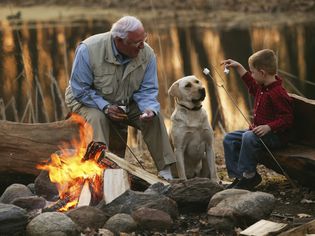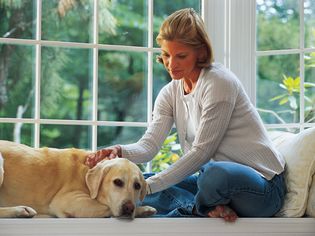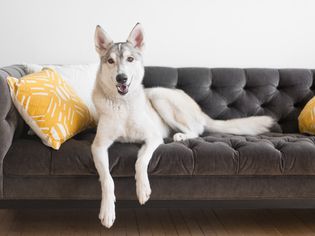Step-by-Step Dog Crate Training Guide for New Pet Parents
Why Crate Training Matters
Crate training leverages a dog’s natural denning instinct to create a secure retreat. Properly executed, it:
Reduces separation anxiety
Aids housebreaking
Prevents destructive behaviors
Provides safe travel containment
Facilitates veterinary recovery
Preparation: Setting Up for Success
Select the Right Crate: Choose wire (best ventilation) or plastic (cozier feel). Size should allow standing/turning but not excess space (use dividers for puppies).
Strategic Placement: Position in quiet family areas - never isolation zones. Bedroom corners or living room peripheries work well.
Comfort Essentials: Add:
Machine-washable orthopedic pad
Snuggle-proof water dispenser
Chew-resistant toys (Kong filled with frozen pumpkin)
Pro Tip: Rub a worn T-shirt inside to scent-familiarize before introduction.
The 4-Phase Training Protocol
Phase 1: Crate Introduction (Days 1-3)
Door Removal: Start with crate door detached
Treat Trail: Scatter high-value treats (dehydrated liver) leading inside
Zero Pressure: Let dog explore freely. Praise calmly when inside.
Feeding Strategy: Serve all meals near crate entrance. Gradually move bowl inward.
Critical: Never force entry. Let curiosity drive engagement.
Phase 2: Building Positive Associations (Days 4-7)
Name the Crate: Use command “Place” or “Den” when they enter voluntarily
Interactive Toys: Provide puzzle feeders exclusively in crate
Duration Increments:
Day 4: Close door 30 sec during treat chewing → open before finishing
Day 5: 2-minute intervals with you visible
Day 7: 10-minute sessions with brief room exits
Reward calm behavior with “jackpot” treats (3 small pieces simultaneously)
Phase 3: Extending Alone Time (Week 2)
Departure Cues: Practice picking up keys/wearing shoes without leaving
Progressive Separation:
15 minutes (quick grocery run)
45 minutes (gym session)
2 hours (dinner out)
Camera Monitoring: Use pet cams to observe stress signals (excessive panting=reduce time)
Phase 4: Overnight Training (Week 3+)
Bedside Placement: Start with crate next to your bed
Potty Protocol:
Last water 2 hours before bed
Final potty break immediately before crating
Pre-dawn potty trip (set alarm for 4AM initially)
White Noise: Use fans or calming playlists to mask household sounds
Troubleshooting Common Issues
Problem: Whining/barking in crate
Solution:
Verify needs are met (potty/water)
Wait for 3-second quiet pause before releasing
Cover crate with breathable blanket to reduce stimulation
Problem: Refusing to enter
Solution:
Higher-value rewards (boiled chicken)
Toss treats deep inside without closing door
Try crate games: hide treats when dog isn’t watching
Problem: Panic during storms
Solution:
Add Adaptil pheromone spray to bedding 30 min prior
Use ThunderShirt anxiety wrap
Play storm desensitization tracks at low volume during meals
Advanced Protocol Notes
Mat Training: Teach “place” command on crate mat first for easier transitions
Crate Rotation: Use multiple crates in different rooms for generalization
Adolescent Regression: Retrain from Phase 2 if destructive behaviors emerge during maturity
Veterinarian Insight: Crates shouldn’t exceed 4-hour use for puppies under 6 months except overnight with potty breaks.
Maintenance & Beyond
Gradually phase out constant treats after 6 weeks, replacing with:
Random high-value rewards (variable reinforcement schedule)
Privilege-based access (e.g., crate = chew toy permission zone)
“Crate lottery” - surprise toys/applesicle treats
Transition to free-roaming by:
Using baby gates to confine to crate-adjacent rooms
Installing pet cam to monitor behavior
Increasing freedom in 30-minute daily increments
Proper crate training creates lifelong confidence. Patience during this 4-8 week investment yields calmer, safer dogs adaptable to travel, boarding, and emergencies.
RECOMMENDED NEWS

Can Dogs Eat Marshmallows? What to Know About the S'mores Staple
Can dogs eat marshmallows? Although these sweet treats may seem harmless at first glance ...

Hip Dysplasia in Dogs
Hip dysplasia is a fairly common orthopedic problem in dogs that affects the stability a...

Is Ibuprofen Safe for Dogs?
Whether your dog is getting older or they play a little too hard and tweak something, it'...

Hot Spots on Dogs
Hot spots are among the most common types of skin problems in dogs. These angry red skin ...

Elbow Dysplasia in Dogs
If you notice your young dog is limping on a front leg, it could be due to a condition ca...

Border Doodle: Dog Breed Characteristics & Care
The border doodle is a cross between a border collie and a poodle. Also known as the “b...
Comments on "Step-by-Step Dog Crate Training Guide for New Pet Parents" :